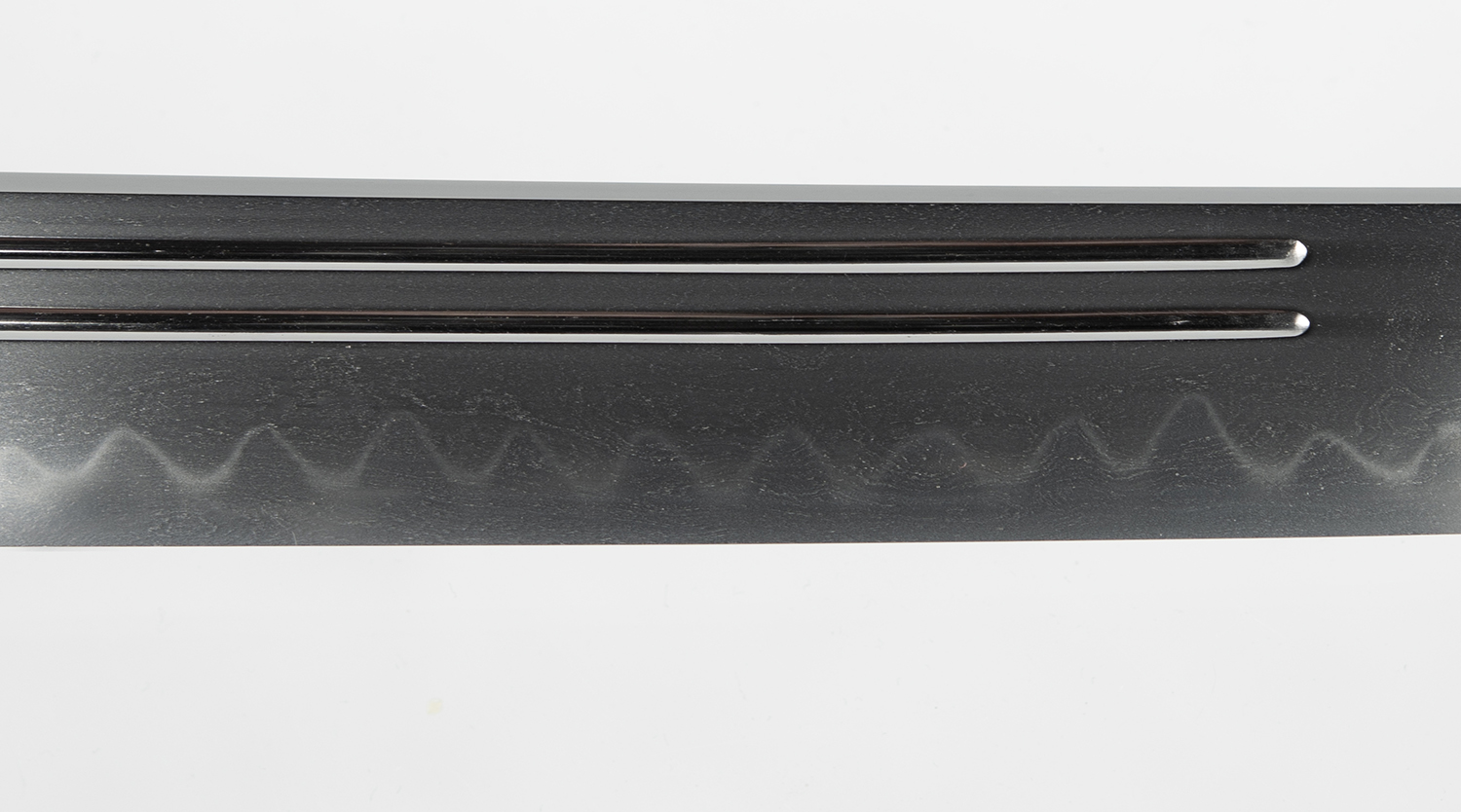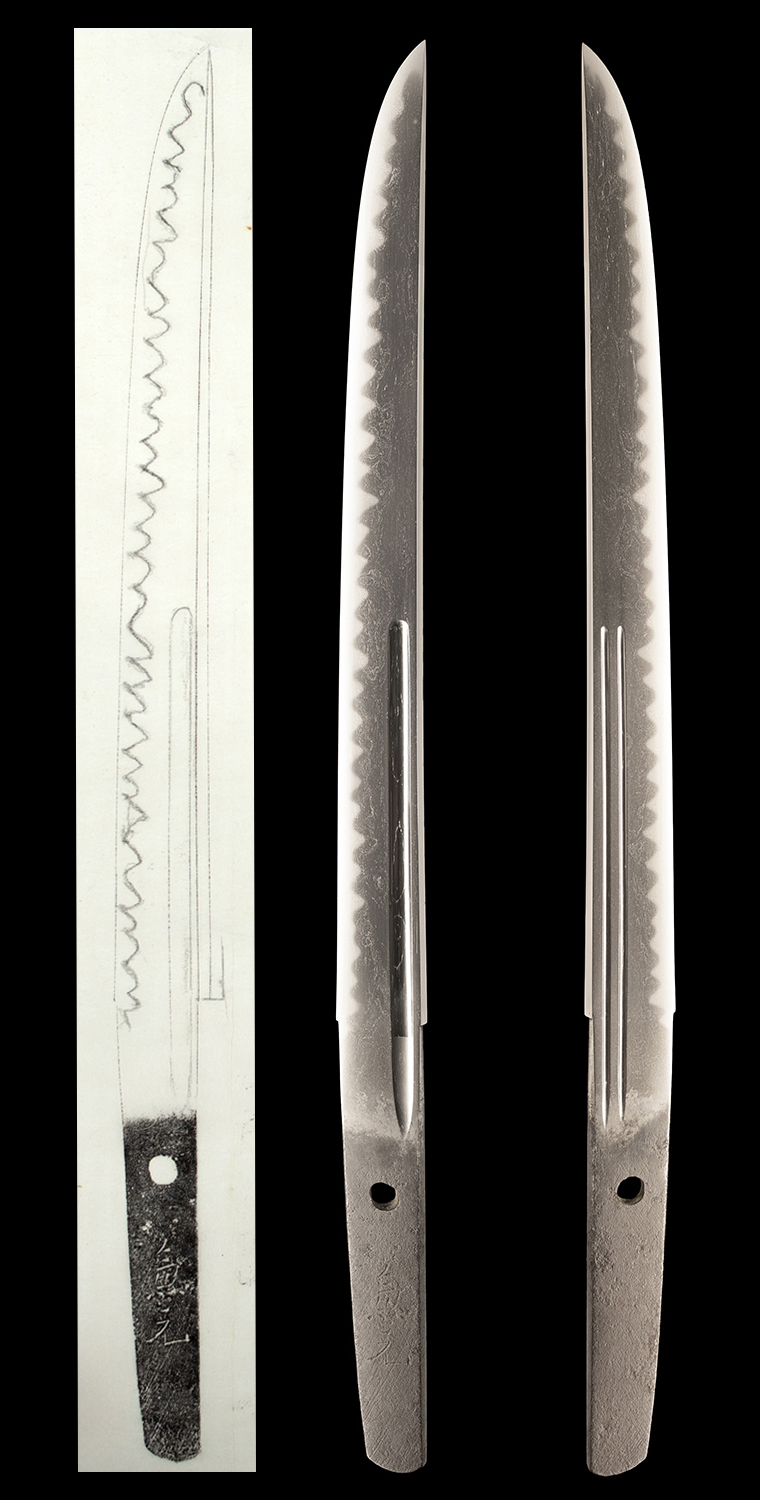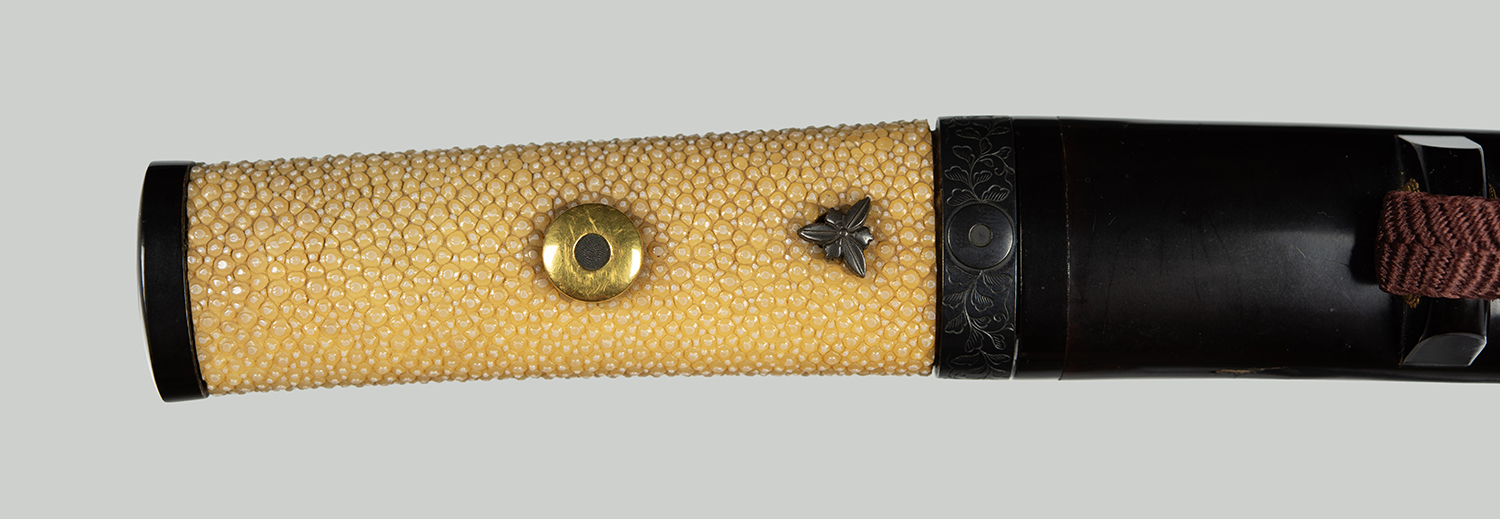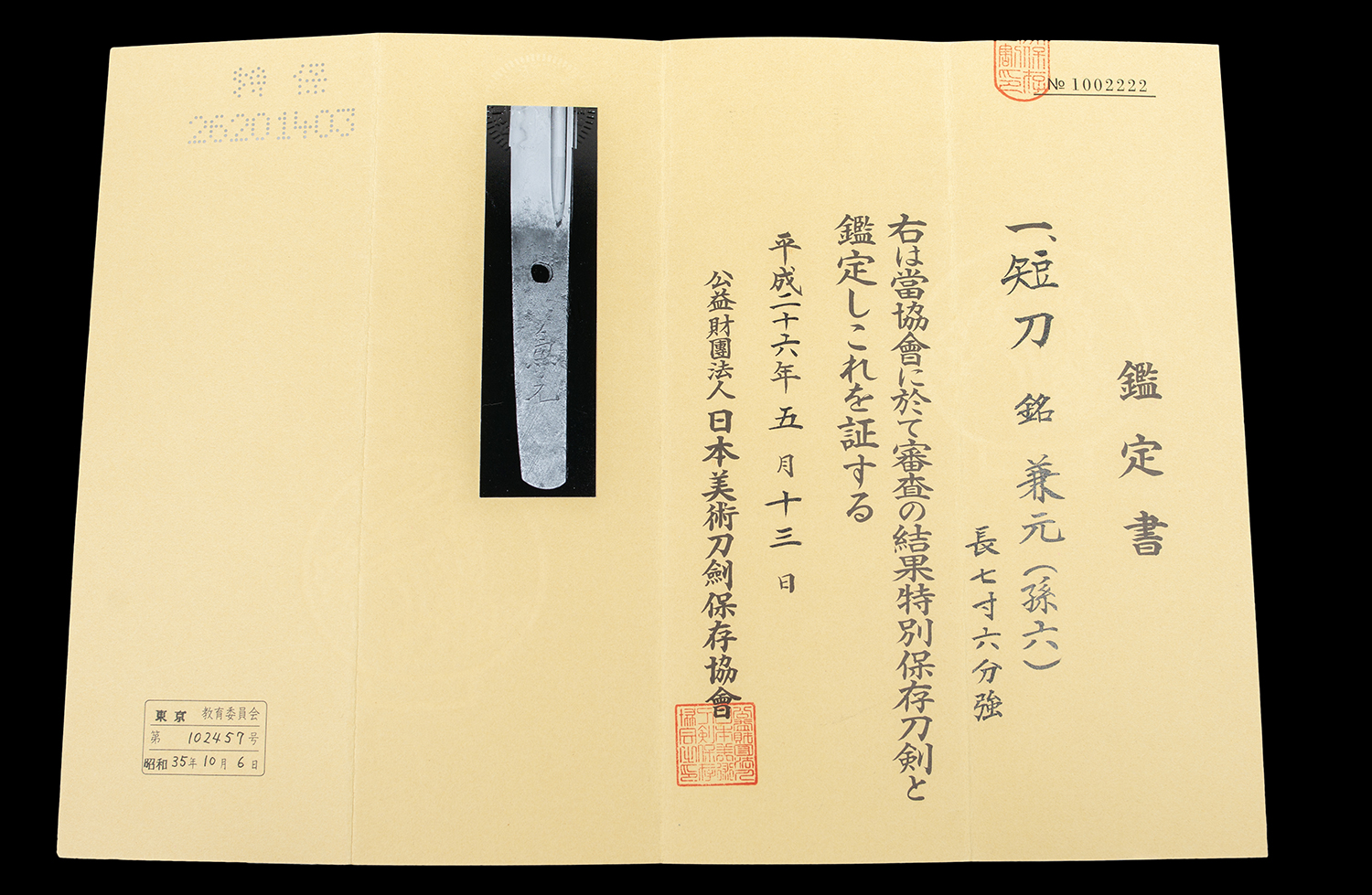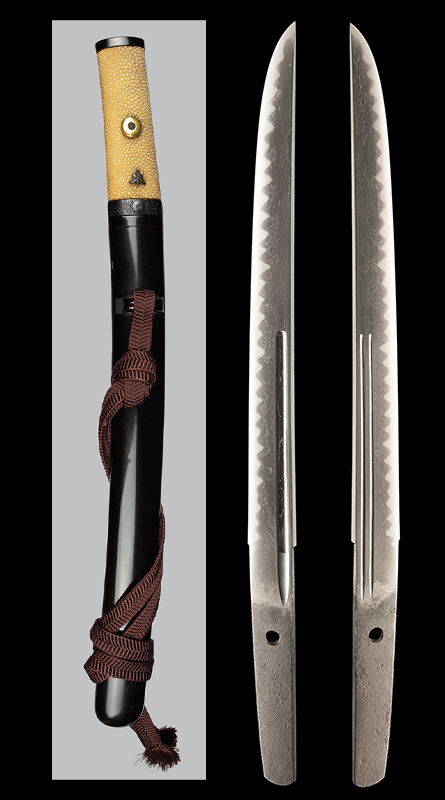|
| |||||||||||||||||||||||||||||||||||||||||
Hamon : Nioi-deki togari gunome midare. The nioi-guchi is soft and tight - being consistent in width and luminosity throughout the length of the ha. There are ashi at the tani of each gunome. Masame in the ha influences soft sunagashi to appear inside some of the ashi. There is ubu mizukage on both sides of the blade.
Boshi : Jizo on the omote and nearly yakizumi on the ura.
Kitae : Mokume hada with some masame mixed in. The jigane is nagareru and "flowing". Clear shirake utsuri. Profuse ko-nie covers the ji.
About this sword : This is an exceptional tanto by Magoroku Kanemoto. The smith was the nidai Kanemoto and is the shodai Magoroku. He was active from around Eisho (1504-1521) throughout the start of the Tenbun nengo (1532-1555). Together with No-Sada he is regarded as the absolute top raking smith of Muromachi Mino smiths and one of the most outstanding craftsmen of all Sue-koto toko. His work style is quite distinct and can be seen as the forebearer of sanbonsuji that would come into full bloom with the generations to follow. This tanto is an example of Magoroku Kanemoto's proto-sanbon sugi hamon. It clearly displays the rounded - not pointed - gunome that are unique to his work, in comparison to his successors. His mei is also unique in that he signed with large characters, angular and with straight strokes. The deki and mei of this blade are text-book examples of his work. The NBTHK specified "Magoroku" on this tanto's Tokubetsu Hozon paper. The specific notation to "Magaroku" speaks volumes to the certainty of authorship and importance of this blade. Magoroku Kanemoto is one of only a small handful of smiths that are ranked as Saijo-o-wazamono and Saijo-saku.
This tanto is accompanied by a fine Edo period koshirae. This koshirae is issaku and wonderfully preserved. It is now, as it was- hundreds of years ago. It is so rare to encounter original and uncontrived koshirae these days, this point cannot be overstated. The combination of kamon on the tsuka suggests that this tanto made have celebrated a bond among two clans, such as a marriage or other important event. The round kamon is a janome or "snake eye" - this was well known as the symbol of the Kato han. The three leaf kamon is a chanomi or "tea berry" and was used by the Matsudaira han. All of the tosogu are matching and expertly crafted. The kebori and takabori work is especially delightful to study. A remarkable koshirae with a restrained and classic alure.
An opportunity to own a Saijo-Saku, Saijo-O-Wazamono masterwork by one of the most famous smiths in the history of Japanese swords, Magoroku Kanemoto.
$24,500
SALE $20,825






